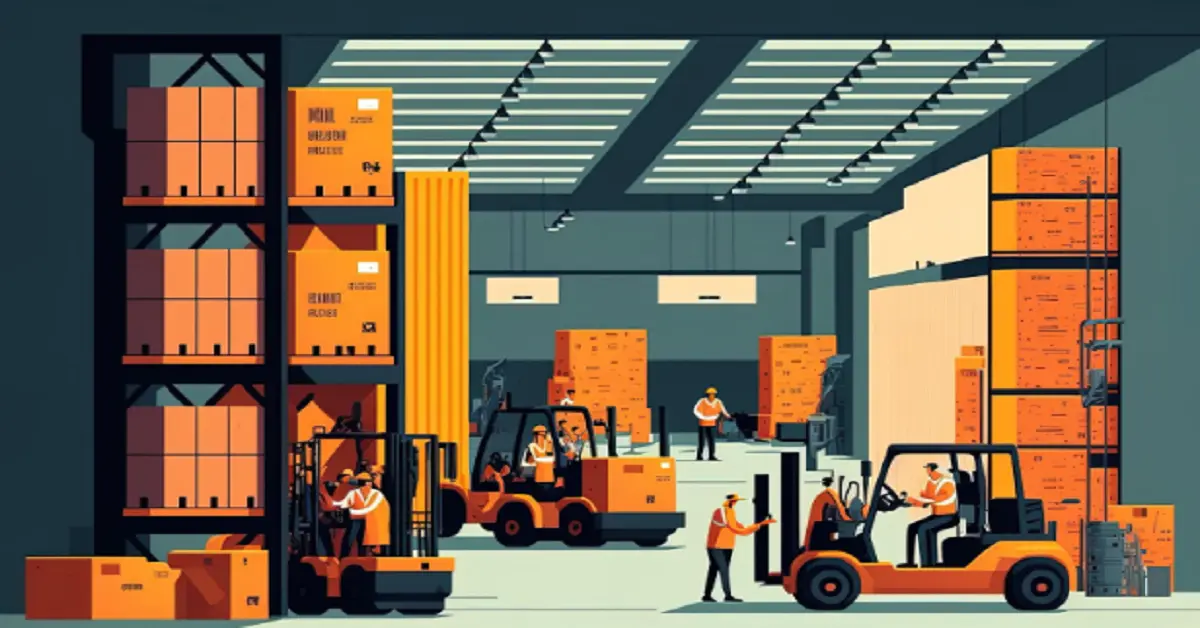Future is Now: How Technology is Reshaping Supply Chains

In the quiet hum of midnight, when most of the world sleeps, the gears of modern supply chains grind tirelessly forward, powered by a symphony of technology that never rests. It’s a world where efficiency is king, and latency, the old ghost haunting many a warehouse and delivery route, is being exorcised by innovations like real-time tracking systems, automated warehouses, and predictive analytics. This isn’t the stuff of fiction; it’s the new backbone of global commerce, transforming supply chains into streamlined beasts that breathe data in real-time.
The Pulse of Progress: Real-Time Tracking Systems
Imagine a package—a simple cardboard box, unassuming and taped at the edges, journeying across continents. Once, its progress would have been a mystery between dispatch and delivery. Today, however, real-time tracking technologies allow both businesses and customers to watch as the package moves, each scan and shift logged instantly. Logistics companies like UPS and FedEx now employ sophisticated tracking systems that provide updates by the minute, reducing the chaos of lost parcels and the anxiety of waiting.
This real-time data isn’t just about peace of mind. It’s a crucial cog in the wheel of supply chain management, enabling companies to make swift decisions. If a storm delays a shipment, rerouting algorithms kick in automatically, finding the next best path without human intervention. In this digital dance, every player—from warehouse workers to last-mile delivery drivers—moves in a choreography orchestrated by technology.
Silent Giants: The Rise of Automated Warehouses
In the heartlands of industrial zones, warehouses have grown from dusty storerooms to titans of automation. Amazon’s fulfillment centers are prime examples, where robots and humans work side by side. These facilities are outfitted with robotic pickers that can retrieve items in seconds, conveyor belts that never tire, and sorting systems that defy the old limits of manual labor.
The impact? Products fly off the shelves faster than ever before, destined for delivery trucks before the order confirmation email even lands in a customer’s inbox. This seamless operation not only cuts down on delivery times but also reduces the human error factor, ensuring that the right products reach the right people.
Anticipating the Unseen: Predictive Analytics in Action
Beyond tracking and automation lies the realm of predictive analytics, a field that might as well be considered sorcery given its ability to forecast future trends. By analyzing vast datasets—consumer behavior, weather patterns, global economic shifts—companies can predict demand surges and prepare accordingly.
Take a company like Target, which uses predictive models to stock up on products before an anticipated spike in sales. By predicting the hot-ticket items for holiday seasons or even weather-related events like hurricanes, stores can ensure they have just the right amount of stock—no more, no less. This precision not only maximizes sales but also minimizes waste, creating a supply chain that’s both responsive and responsible.
The Human Touch in a Digital World
Amidst all this technology, the human element remains crucial. Technology may drive the system, but people provide the judgment and creativity that no machine can replicate. Customer service agents, logistics coordinators, and even the drivers who navigate the last miles—it’s their insights and instincts that add depth to the digital calculations.
Tech AI Images: Visualizing Change
In an era where visual content is king, the demand for tech ai images has skyrocketed. These images, crafted by AI, offer more than just illustrations; they provide a way to visualize complex tech systems and processes in a manner that’s digestible for the average reader or business stakeholder.
Business Images for Presentations: Crafting the Narrative
Similarly, business images for presentations have become indispensable in the corporate world. They help weave a narrative that can align teams, persuade stakeholders, and help visualize data and trends that drive decisions. From startups to giants, every business now leans on high-quality, relatable visuals to communicate both challenges and solutions within the supply chain.
Conclusion: The Symphony of Technology and Human Ingenuity
As sunrise breaks, the tenacious speed of mechanical progression keeps on reclassifying the limits of what supply chains can accomplish. From ongoing global positioning frameworks that keep us educated each step regarding the way, to robotized distribution centers that rethink proficiency, to prescient examination that expect our requirements before we even voice them, innovation has turned into the foundation of present day supply chains.
However, it’s the human soul, the touch and the decision-production of people, that outfits this innovation, directing it toward a future where supply chains are quicker and more proficient as well as more sensitive to the human requirements at their center.
In this digital age, where every second counts and every interaction matters, the marriage of technology and human insight within the supply chain isn’t just convenient—it’s essential, and it’s breathtaking to behold.
[…] future of hentai is shaped by emerging technologies like AI and virtual reality. These innovations are expected to enhance both the content creation […]